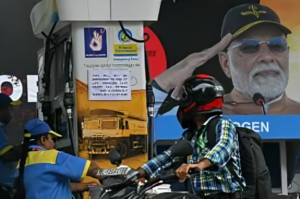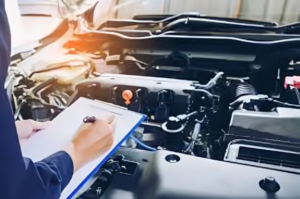Delhi Lifts Ban on Overaged Vehicles: Relief and Renewed Responsibilities Across NCR
Introduction
The recent decision by the Delhi government to lift the prohibition on overaged diesel vehicles has brought a wave of relief to thousands of commercial transport operators. Announced on July 8, 2025, this policy shift will take effect from November and extend to all districts within the National Capital Region (NCR). After months of uncertainty and mounting operational challenges, fleet owners can finally plan for the months ahead—albeit with a renewed sense of responsibility toward vehicle maintenance and emission standards.

Background and Rationale
Delhi has long grappled with severe air pollution, ranking among the world’s most polluted capitals. In early 2025, the Aam Aadmi Party government expanded its crackdown on older diesel vehicles—banning trucks and buses over 15 years old from entering the city—to curb particulate matter and nitrogen oxide emissions. However, the sudden imposition strained small business owners and logistics companies, many of whom could not afford rapid fleet upgrades.
Key factors influencing the ban lift include:
- Economic hardship: Small carriers faced revenue losses up to 30% in Q1 2025.
- Supply chain disruptions: Construction, retail, and e‑commerce sectors reported delivery delays.
- Judicial pressure: Several petitions in the National Green Tribunal argued for phased implementation.
Scope of the New Rule
From November 2025 onward, the prohibition on vehicles older than 15 years will be rescinded—but only within NCR districts, not within the Delhi municipal limits themselves. This nuanced application aims to balance economic needs with environmental goals.
- Affected Areas
- No restriction in Ghaziabad, Noida, Greater Noida, Gurugram, Faridabad, and other NCR regions.
- Delhi’s central and suburban zones will still enforce age-based vehicle checks.
- Compliance Measures
- Mandatory annual emission testing at certified centers.
- Hefty fines for tampering with pollution-control devices.
- Incentives for retrofitting older vehicles with particulate filters.
Impact on Stakeholders
Transport Operators
Relief at last: many small operators—who had paused operations or diverted routes—can resume full services. However, they must now invest in regular maintenance:
- Budgeting for filter replacements and engine overhauls.
- Scheduling monthly emission diagnostics instead of ad-hoc checks.
Citizens and Consumers
Customers can expect:
- Smoother delivery timelines for goods and materials.
- Potential stabilization of prices for essentials, as logistics costs ease.
Environmental Advocates
While welcoming phased inclusivity, green groups stress:
- Continuous monitoring to prevent pollution spikes.
- Transparent public reporting on air quality trends post-November.
Real-Life Example
Consider Mr. Sharma, who owns a ten-truck fleet based in Noida. When the ban hit, he had to rent newer vehicles at double the cost—eroding his profit margins. With the lift, he plans to:
- Retrofit three older trucks with particulate filters by October.
- Enroll all vehicles in a monthly emission audit program scheduled at his local RTO.
- Train drivers on eco‑driving techniques to reduce idling and fuel wastage.
By December, he expects his operational efficiency to rebound by at least 20%, while keeping his environmental footprint in check.
Challenges and Responsibilities
Lifting the ban is not a blanket green light to neglect pollution control. Stakeholders must:
- Adopt best practices: Regularly check tyre pressure, change oil on schedule, and maintain clean air filters.
- Leverage technology: Use GPS‑enabled telematics to monitor fuel consumption and idle time.
- Stay informed: Keep abreast of future policy tweaks, such as possible emission slabs based on vehicle type.

Looking Ahead
As Delhi prepares for the post-October era, coordination between Delhi’s transport department, NCR authorities, and vehicle owners will be crucial. Potential next steps include:
- Incentive Schemes for phasing out the oldest vehicles.
- Digital Platforms for booking emission tests and paying fines.
- Public Awareness Campaigns highlighting the importance of regular vehicle upkeep.
Such measures can transform the policy shift from a temporary relief to a sustainable model for urban transport management.
Conclusion
The lifting of the ban on overaged vehicles across NCR districts marks a pivotal moment for Delhi’s transport ecosystem. It alleviates economic strain on operators while underscoring the shared responsibility of maintaining air quality. Success will hinge on rigorous compliance, proactive maintenance, and transparent collaboration among authorities, fleet owners, and citizens. As November approaches, this balanced approach may well become a template for other Indian metros striving to harmonize growth with environmental stewardship.